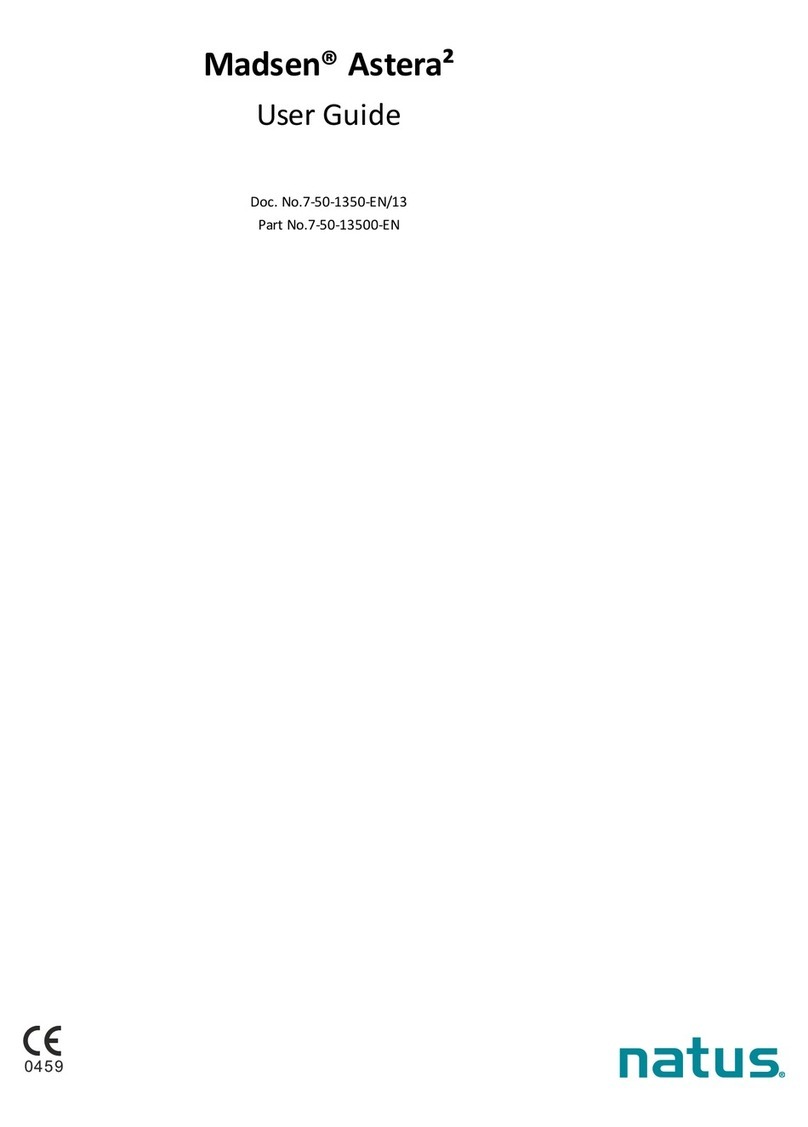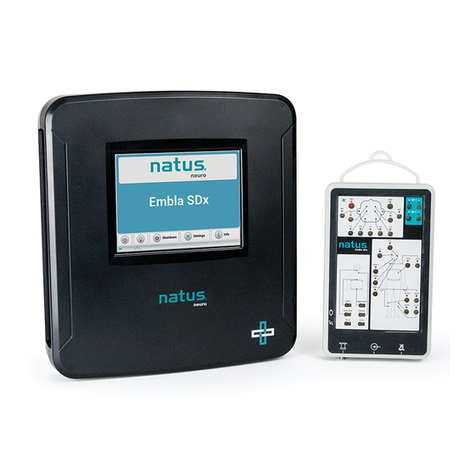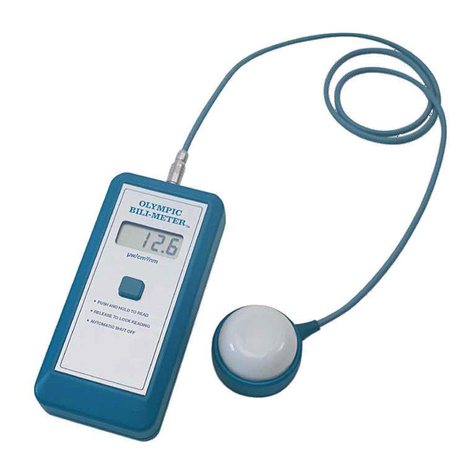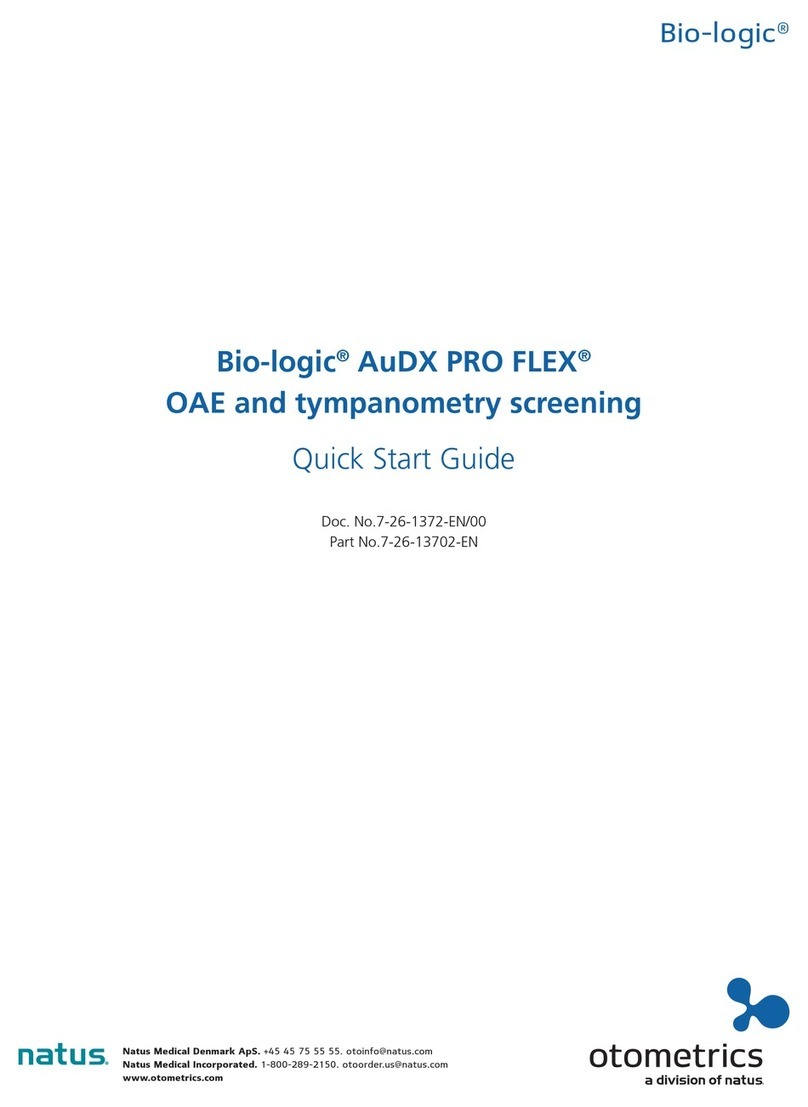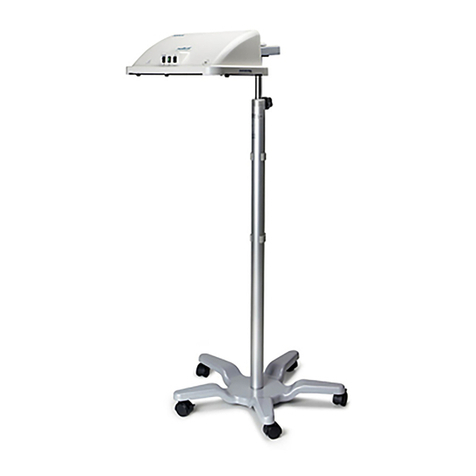
User and Service Manual Natus®Brain Monitor & Embla Dx Series™
3
Pulse Oximeter Sensor Warnings........................................................................................................................................... 18
Conducted Immunity Warnings ............................................................................................................................................. 18
Procedures and Warnings............................................................................................................................................................... 18
Electrostatic Discharge (ESD) Handling ...................................................................................................................................... 18
Conducted Immunity Procedures and Warnings........................................................................................................................ 19
Description of Symbols ................................................................................................................................................................... 20
Specifications: Brain Monitor & Embla Dx Series Amplifiers .......................................................................................................... 28
Product Images ............................................................................................................................................................................... 30
Brain Monitor ............................................................................................................................................................................. 30
Embla NDx .................................................................................................................................................................................. 30
Embla SDx................................................................................................................................................................................... 30
Natus Base Unit .......................................................................................................................................................................... 31
Breakout Boxes........................................................................................................................................................................... 32
Brain Monitor......................................................................................................................................................................... 32
Embla NDx.............................................................................................................................................................................. 33
Embla SDx .............................................................................................................................................................................. 34
Brain Monitor SpO2 Sensor Cable Clip................................................................................................................................... 35
Setup............................................................................................................................................................................................... 36
Connections................................................................................................................................................................................ 36
Setting the IP Address ................................................................................................................................................................ 37
Touchscreen Icons ................................................................................................................................................................. 38
Amplifier Usage and Features......................................................................................................................................................... 40
Getting Started ........................................................................................................................................................................... 40
Placement of the Operator and Patient................................................................................................................................. 40
Beginning a study ................................................................................................................................................................... 40
Powering Down the System ................................................................................................................................................... 40
Adding the Breakout Box to a Pouch ..................................................................................................................................... 41
Potential Equalization Conductor............................................................................................................................................... 41
Connection Mode ....................................................................................................................................................................... 42
Connecting the Natus Base Unit and Brain Monitor & Embla Dx Series Breakout Boxes.......................................................... 43
Removing the Connections......................................................................................................................................................... 43
Connecting to the Body Position Pod ......................................................................................................................................... 44
Connecting to the Luer Lock Pressure Sensor ............................................................................................................................ 44
Transport System Specifications and Maintenance........................................................................................................................ 45
XLTEK Trolley Specifications ....................................................................................................................................................... 45
Breakout Box Holster with Roll Cart ........................................................................................................................................... 46
Natus ErgoJust Cart Specifications ............................................................................................................................................. 46
Maintenance .............................................................................................................................................................................. 46
Transportation System Specifications and Maintenance Warnings and Cautions .................................................................... 47
